A snake by any other name
A cold and drowsy snake visited in January. The yard had experienced floods, in days before, so I expect the snake fled some drenched winter hideaway. Moving slowly in the chill, our visitor spent a half-hour or more searching for dry accommodations in leaves that had settled against our house’s concrete foundation.
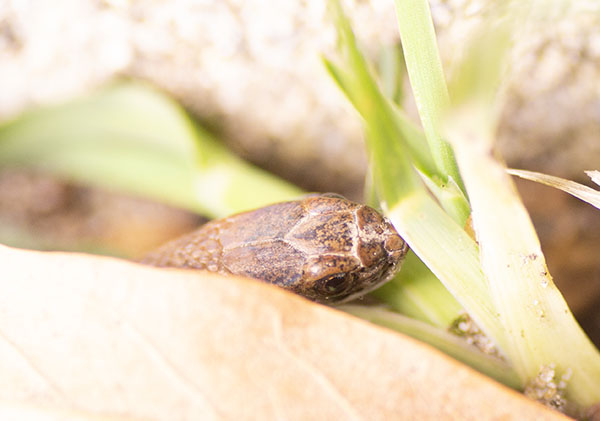
Over the past decades, I’ve caught rare glimpses of these snakes in the yard. Each time, I filed them in the generic “garter snake” folder of my internal memory bank. My flawed and over-capacity garter snake folder, in my flawed and over-capacity memory, holds all of the small, striped (or not), yard-sized snakes I’ve ever encountered. As long as the small, striped (or not), yard-sized snakes weren’t green, I called them garter snakes. (Green snakes are, obviously, “green snakes” in my flawed internal memory bank.)
Many of my “garter snakes” were, most likely, garter snakes.
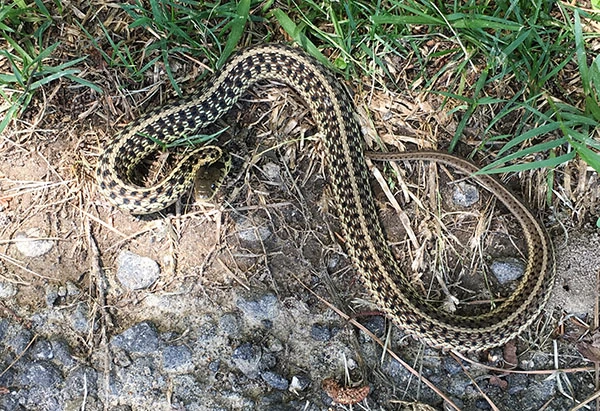
Many of my “garter snakes” were, most definitely, not garter snakes.
Garter snake. Not garter snake. Other snake. Each time I get a chance to patch my flawed and over-capacity internal memory bank, I’m relieved. Especially here, in my middle years.
As it’s been too cold for snakes to emerge, except in emergencies, I haven’t tested my brownsnake memory patch against snakes found in the wild. Or in the yard. So I’ve been testing it against my photo archive. At the moment, I’m still mid-correction, my internal dialogue still chirping “garter snake” when I come across photos of small, not-green, striped (or not striped), yard-sized snakes, still needing the gestalt-shift between first impression and new information. Still needing the pause and closer look. Not always garter snake. Sometimes, Dekay’s Brownsnake.
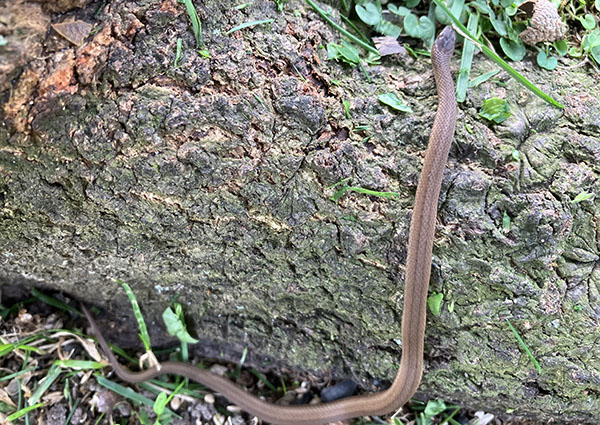
Is the image a vase or a pair of silhouettes? Is the snake a generic “garter snake” or a Dekay’s Brownsnake? The gestalt-shift between recognitions feels like wonder to me.
As for snakes in vases, or other yard art, maybe they are neither garter snake nor Dekay’s Brownsnake?
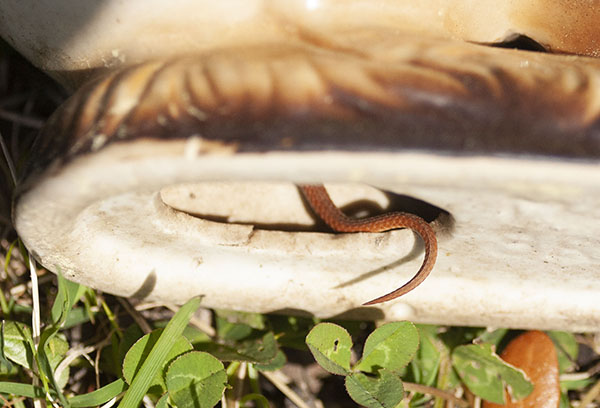
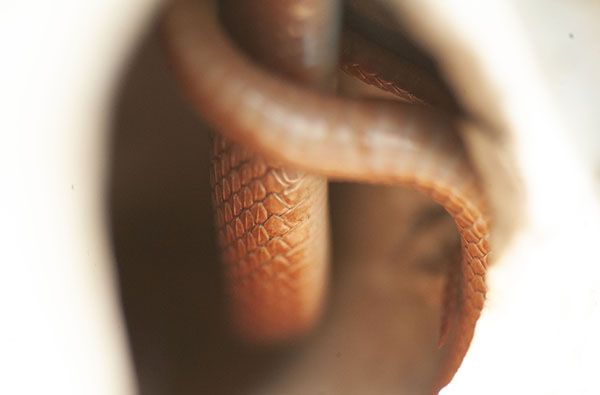
I’ve seldom had the luxury of hovering here, at the pivot point of internal correction. But my time, this winter, has slowed with the chill. Long nights and short days trigger depression and anxiety, steering me toward torpor. And this winter’s torpor has been more meditative than some years. I’ve lingered over these photos of our little reptile visitor. I want to call this moment learning, except that overused word feels both too small and too large. As do other words, like knowledge and discovery.
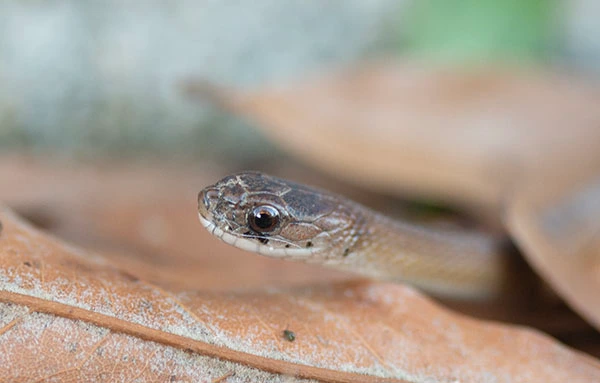
Such words, and the ideas they attempt to convey, have been claimed and reclaimed, used and abused, lauded and cursed for centuries. Well before I began grappling with my own understandings and misunderstandings, philosophers and critics set their pens to the task of recording, preserving, and passing on observations that make reality a little bit safer, a little bit more predictable, for future generations of humanity. So many men (yes, mostly men) writing letters to a future with so much more to observe.
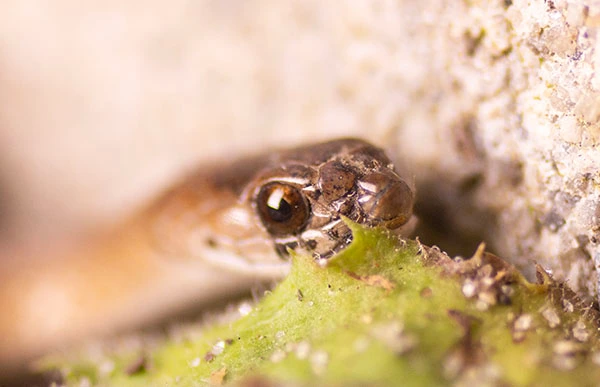
What goes into a name? Constructing (or deconstructing) Dekay’s Brownsnake
Dekay’s Brownsnake has the dubious honor of being named after two 19th century (male) naturalists. Its taxonomic genus-species name is Storeria dekayi. This caught me by surprise. An entire genus of snakes named for David Humphreys Storer (1804-1891), an American physician and naturalist.
Species names have long been used to preserve and honor the names of explorers, scientists, and/or celebrities (a dusty old practice, also evident in common names such as Dekay’s Brownsnake, that is under discussion and overdue for a change) but genus names tend to be more functional. Genus names often highlight one of the traits (or missing traits) that identify the included species as similar enough to be grouped together while simultaneously dissimilar from other groups. Granted, the genus Storeria remains a small genus (only four species, according to the University of Michigan’s Museum of Zoology/Animal Diversity Web), but still….
I couldn’t resist a stroll through the search engine. I never can. Literature search is my favorite phase of projects, and archives are my happy place.
According to his obituary, David Humphreys Storer (1804-1891) was the dean of Obstetrics and Medical Jurisprudence for Harvard Medical School. He also had a great fondness for collecting. His collections encompassed everything from coins to birds eggs, and he cultivated connections with toll takers and sailors to bolster his coin, shell, and fish collections. His work with the Boston Society for Natural History led to a position with the Natural History Survey of the Commonwealth, where Storer managed the fishes and reptiles portion of the survey, resulting in the eventual publication of A History of the Fishes of Massachusetts.
Storer’s internet presence also includes an 1831 pamphlet, noted on page two to be the “Report of a Trial: Miles Farmer, versus Dr. David Humphreys Storer; commenced in the Court of Common Pleas, April Term, 1830, from which it was appealed to the Supreme Judicial Court, and by consent of parties, referred to Referees, relative to the transactions between Miss Eliza Dolph and George Washington Adams, Esq., son of the late President of the United States. It is impossible but that offences will come; but woe unto him through whom they come! It were better for him that a mill stone were hanged about his neck, and he cast into the sea. —Luke, xvii. 1, 2. Reported by the Plaintiff.” (!?)
I must admit that my interest in Storer dissipated before I read the entire pamphlet. Historical gossip aside (“…the transactions between Miss Eliza Dolph and George Washington Adams…”? Might this have been a scandal worthy of Lady Whistledown?), the pamphlet doesn’t contribute to my relationship with the little snakes in my yard.
Neither the obituary nor the pamphlet help me understand the man, David Humphreys Storer, who was so admired as to have a small genus of small snakes carrying his name to this day. And here lies part of the trouble with eponymous taxonomy. No matter how admired, in collecting circles, nor how despised, in other circles, Storer’s name cannot help me understand the habits and habitats of the little snakes I’m currently obsessed with.
James Ellsworth Dekays’ name doesn’t help, either. Another American physician and naturalist, Dekay (1792-1851) participated in a different state sponsored natural survey, for the state of New York. Dekay eventually published his findings in Zoology of New-York: Or the New-York Fauna: Comprising Detailed Descriptions of all the Animals Hitherto Observed within the State of New-York, with brief Notices of Those Occasionally Found Near Its Borders, and Accompanied by Appropriate Illustrations. In Part III (Reptiles and Amphibia), Dekay described a small brown snake collected by “…John Crumby, Esq., a zealous sportsman and acute observer, who captured [the snake] as it was swimming across a large bay on the northern coast of Long Island” (pp. 46-47).
Dekay’s three-paragraph note about the little brown snake is widely attributed as the first description. (A formality often conflated with discovery.) Dekay first used the genus name Tropidonotus but later corrected it to the genus name Coluber. Today the genus Storeria is classified within the family Colubridae.
A quick search engine query leads to a slightly more interesting article about Dekay–“Between the First Blind Cavefish and the Last of the Mohicans: The Scientific Romanticism of James E. Dekay” by Aldemaro Romero. But again, this article doesn’t help me understand or appreciate the yard’s snakes.
So my stroll through the binomial etymology of Storeria dekayi found my first example of an eponymous genus, two 19th century (male) physician-naturalists, a sex scandal with political connections, an article that tethers blind cavefish to James Fenimore Cooper, and one unfortunate little brown snake that fell prey to a sportsman while the snake was (likely) minding its own snake-business, swimming across a large bay on the coast of Long Island.
Reconstructing my memory, brown snakes included
But why do I crave a relationship, a learning or knowing, with the small, shy, nocturnal, snail-and-slug eating snakes in my yard?
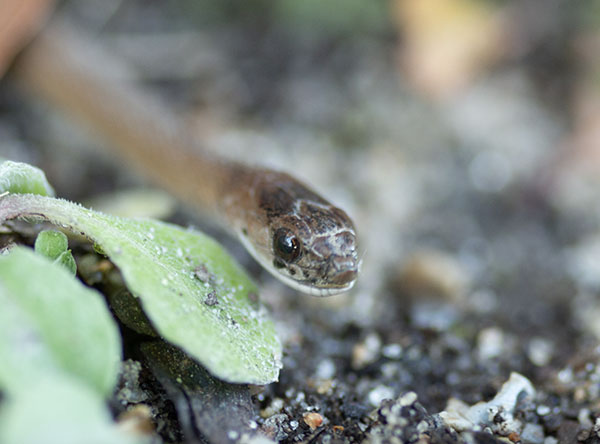
Why, after so many years of being content to see these snakes as “garter snakes”, do I care so much now? I suppose part of my previous contentment is rooted in a youthful mis-hearing and mispronunciation. Garter snakes were garden snakes, most often encountered during gardening. Small, not-green, striped (or not), yard-sized snakes. As long as they weren’t venomous, they were simply garden snakes.
Venomous-or-not was my earliest snake knowledge, my first lessons in the garden. Some snakes were, and are, venomous. Avoid. Don’t get bitten. Be afraid, if you must. If that’s what keeps you safe, be afraid of snakes. (Of course, all of this gets mixed in with Genesis, with Adam and Eve and a serpent that spoke of temptation. The lesson, again, was fear.)
Our father was a snake killer. Every snake he saw, he slaughtered with whatever tool was closest at hand. His histrionics over snakes were the stuff of family lore, which added a dose of realism to the lesson. My older siblings, and sometimes our mother, ridiculed our father’s snake phobia. I absorbed an adjacent lesson, that the reflex killing of snakes was an action worthy of ridicule.
I developed a fascination with these animals that were so terrifying to our father. I wanted to be not-afraid of what our father feared. (And I wanted to avoid being another target of family ridicule.) Rat snakes, king snakes, corn snakes, green snakes, garden/garter snakes. All the hen-house thieves and barn guardians. All the camouflaged brush and grass dwellers. I watched for them with a cautious kind of hope, longing to catch a glimpse. To see them glide across a rafter or ripple into the next row of okra or bask, egg-sated, near the hen house.
And then, during my years in the boggy woods, the fear-laced lessons of my past peeled away like the hull of a seed.
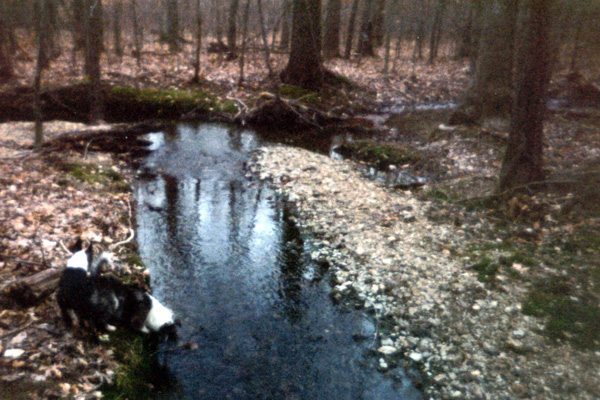
In my boggy woods, hidden from the lessons of my parents and their religion, I sprouted. I developed an observational habit of naming and knowing the cottonmouths and the water snakes around the creek, the copperheads and the corn snakes near the edges, the rattlesnakes and the rat snakes under and in the trees. I knew where the gravid females basked and where the hungry youngsters hunted. I knew the woods and the creek because they were my favorite place to be myself. Should a snake have spoken to me, there, I would have eaten without hesitation whatever it offered.
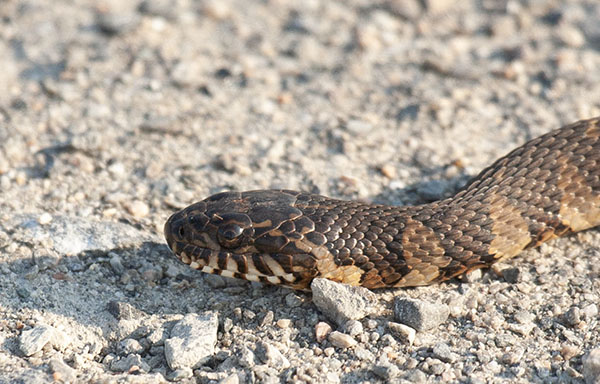
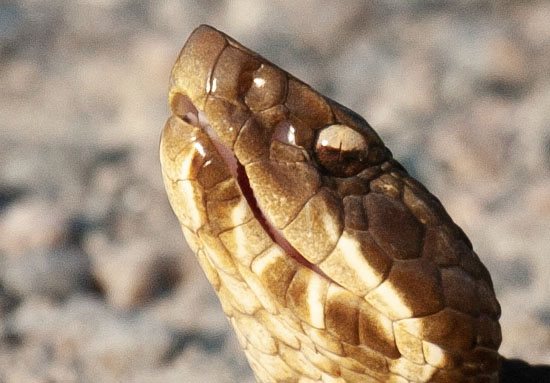
But the garden snakes, as long as they weren’t venomous, were simply garden snakes. The garden wasn’t my habitat, so I didn’t need to know its snakes. I tended the garden, and ate its tame offerings, with impatient distraction, always longing for the woods.
Here in my middle years, the garden and yard have become my habitat. I no longer visit the woods, except as a tourist. Now I need to name and know the garden snakes.
Other than the practicality and predictability of recognizing our Dekay’s Brownsnake as not-venomous, I can’t put my finger on the reason for my need. It’s not learning, knowledge, or discovery. It’s simply there. As are the garter snakes. The not garter snakes. The Dekay’s Brownsnakes, who, I’m happy to note, are drawn to the yard and garden because they like to eat slugs and snails. Perhaps this is reason enough to name them and to know them?
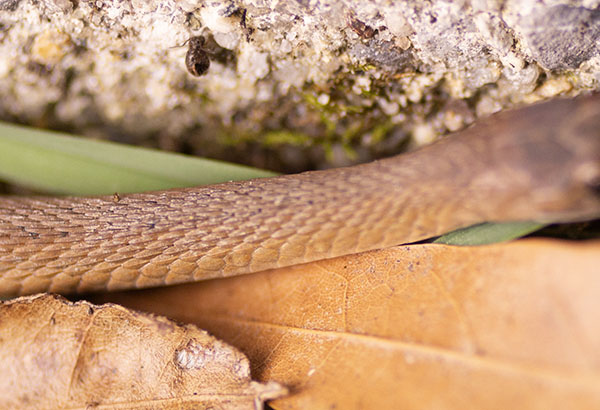
Perhaps it’s all simply my personal gestalt-shift. The vase is Tennessee and the silhouettes are Virginia. The vase is the woods, the silhouettes our yard. The vase is youth, the silhouettes are now. The vase is water snakes, the silhouettes are garden/garter snakes.
Gestalt-shift. (Dare I say paradigm shift? I dare, but shouldn’t. It’s a rabbit hole.) At any rate, it’s another moment of wonder.
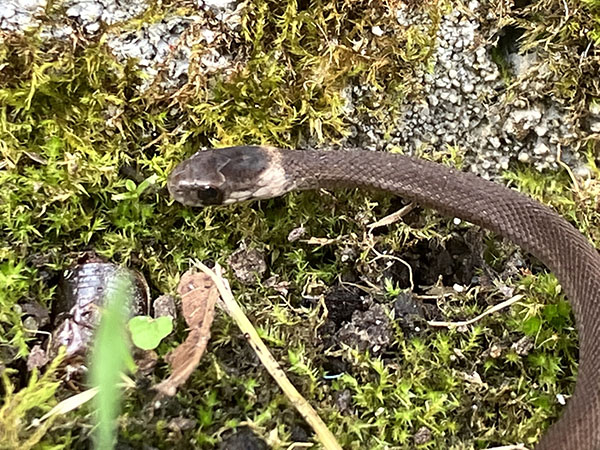
Here are links to three reviews of my poetry collection, Watershed:
“The collection focuses on the natural world and the human relationship with nature. …” by Crafty Green Poet (read the full review here)
“The poems have both a logical and mystical aura that keep the reader in place while the poems flow forward. …” by Lynette G. Esposito at North of Oxford (read the full review here)
“Watershed from Kelsay Books is an antidote to compulsion, to insistence, to the headlong rush into the next thing and the next. …” by GriffinPoetry at Verse Image (read the full review here)
I’m grateful for the time that readers, editors, and reviewers have spent with my writing, and with my book. I’ve loved every minute of my writing journey.
Here are a few articles and essays that are more interesting, and more important, than my musings:
Discovered in Collections, Many New Species are Already Gone by Katarina Zimmer at Undark
When Scientists “Discover” What Indigenous People Have Known for Centuries by George Nicholas at Smithsonian Magazine
The history of natural history and race: Decolonizing human dimensions of ecology by Maria N. Miriti, Ariel J. Rawson, and Becky Mansfield at esa journals (Ecological Society of America)
Feds announce plans to begin rescuing sick sawfish amid mysterious die-off by Jenny Staletovich at WLRN 91.3FM
People more often are origin of infectious diseases in animals than vice versa, data suggest by Mary Van Beusekom, MS, at CIDRAP
Ecological countermeasures to prevent pathogen spillover and subsequent pandemics by Raina K. Plowright, Aliyu N. Ahmed, Tim Coulson, Thomas W. Crowther, Imran Ejotre, Christina L. Faust, Winifred F. Frick, Peter J. Hudson, Tigga Kingston, P. O. Nameer, M. Teague O’Mara, Alison J. Peel, Hugh Possingham, Orly Razgour, DeeAnn M. Reeder, Manuel Ruiz-Aravena, Nancy B. Simmons, Prashanth N. Srinivas, Gary M. Tabor, Iroro Tanshi, Ian G. Thompson, Abi T. Vanak, Neil M. Vora, Charley E. Willison, & Annika T. H. Keeley at Nature Communications
living shadows: aesthetics of moral worldbuilding by Brandon at sweater weather (hat tip to Science for Everyone)
Fear and Loathing in Tennessee: Librarians Face Anxiety, Burnout, Job Threats, and Hate Speech Due to Book Challenges and Legislation by Alex Sharp, Jessica McClure, and Cassandra Taylor at Tennessee Library Association
Why flying insects gather at artifical light by Samuel T. Fabian, Yash Sondhi, Pablo E. Allen, Jamie C. Theobald, & Huai-Ti Lin at Nature Communications
Biology Is Not Binary by Kate Clancy, Agustin Fuentes, Caroline M Vansickle, & Catherine Clune-Taylor at American Scientist (another hat tip to Science for Everyone)
‘Brain fog’ is one of Covid-19’s most daunting symptoms. A new study measures its impact by Elizabeth Cooney at STAT
When Horror Is the Truth-teller: It is hard, in the era of the AR-15, to fear a vampire. by Alexander Chee at Guernica















































































































